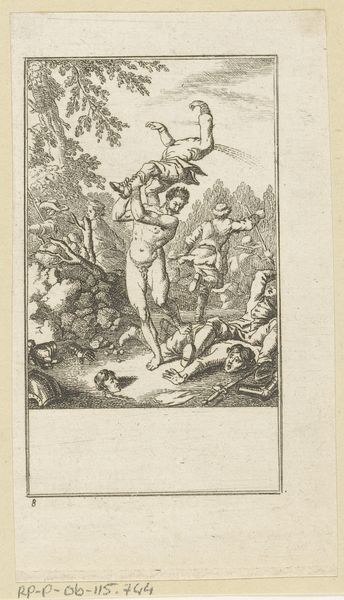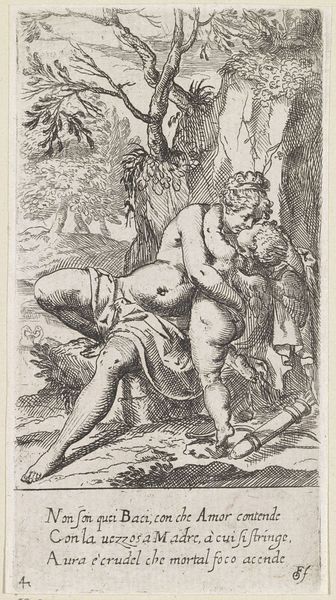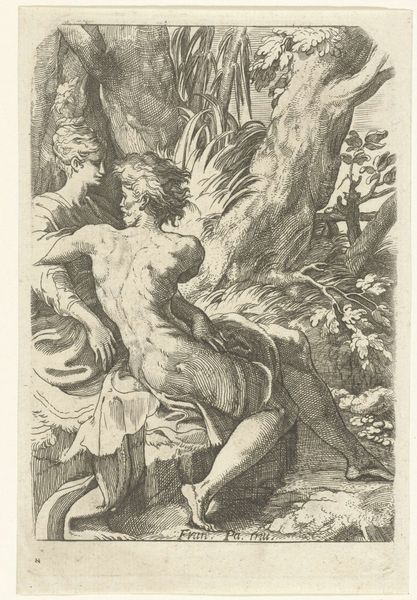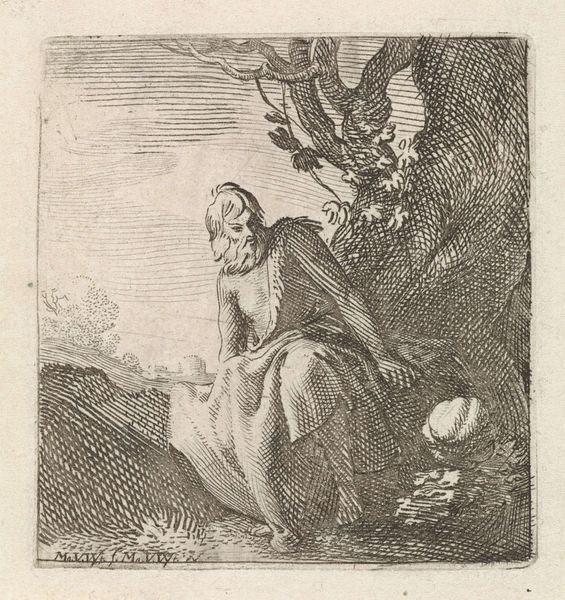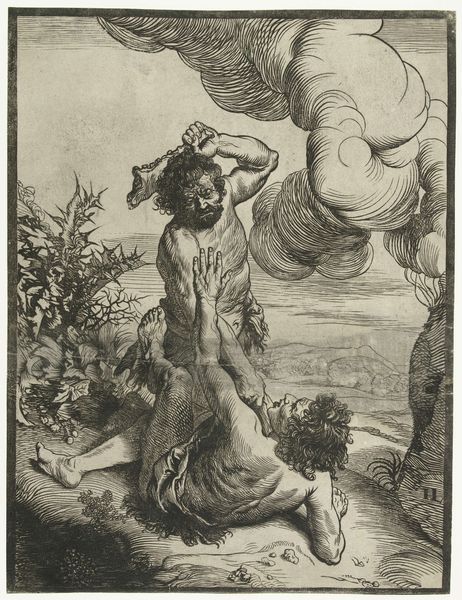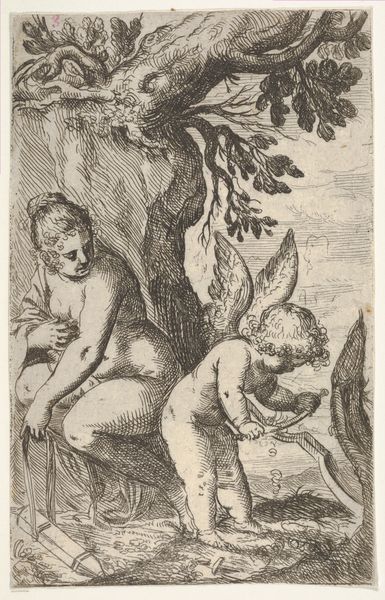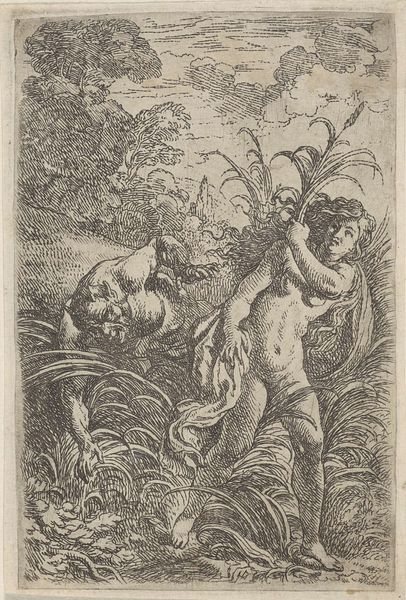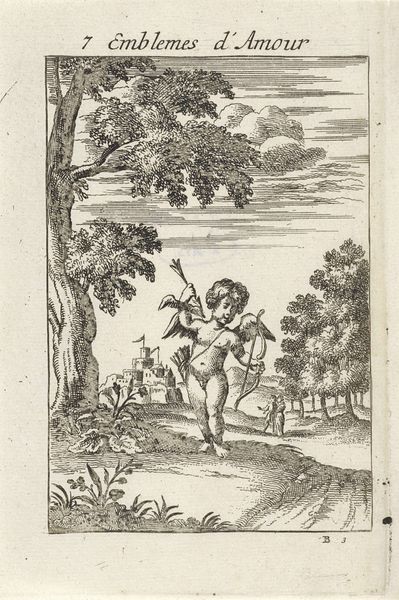
print, engraving
#
allegory
# print
#
old engraving style
#
landscape
#
classical-realism
#
mannerism
#
figuration
#
nude
#
engraving
Dimensions: height 347 mm, width 262 mm
Copyright: Rijks Museum: Open Domain
Hendrick Goltzius created this print of Proserpina at the end of the 16th century. The print depicts the Roman goddess Proserpina, daughter of Ceres, the goddess of agriculture, who was abducted by Pluto, god of the underworld. The image creates meaning through visual codes. The oval frame and mythological subject matter allude to the classicizing tastes of the period. Goltzius made this print in Haarlem, a city that witnessed rapid economic and social change at this time. The Northern Netherlands were in revolt against Spanish rule, which gave rise to new civic institutions and forms of cultural expression. The image is progressive in that it brings classical mythology into a contemporary context. Printmaking at this time was an entrepreneurial activity, and artists were keen to disseminate their ideas through this medium. Historians make use of archival documents, such as letters and inventories, as well as prints and drawings to understand art and its cultural meanings. The meaning of art is contingent on social and institutional context.
Comments
No comments
Be the first to comment and join the conversation on the ultimate creative platform.
